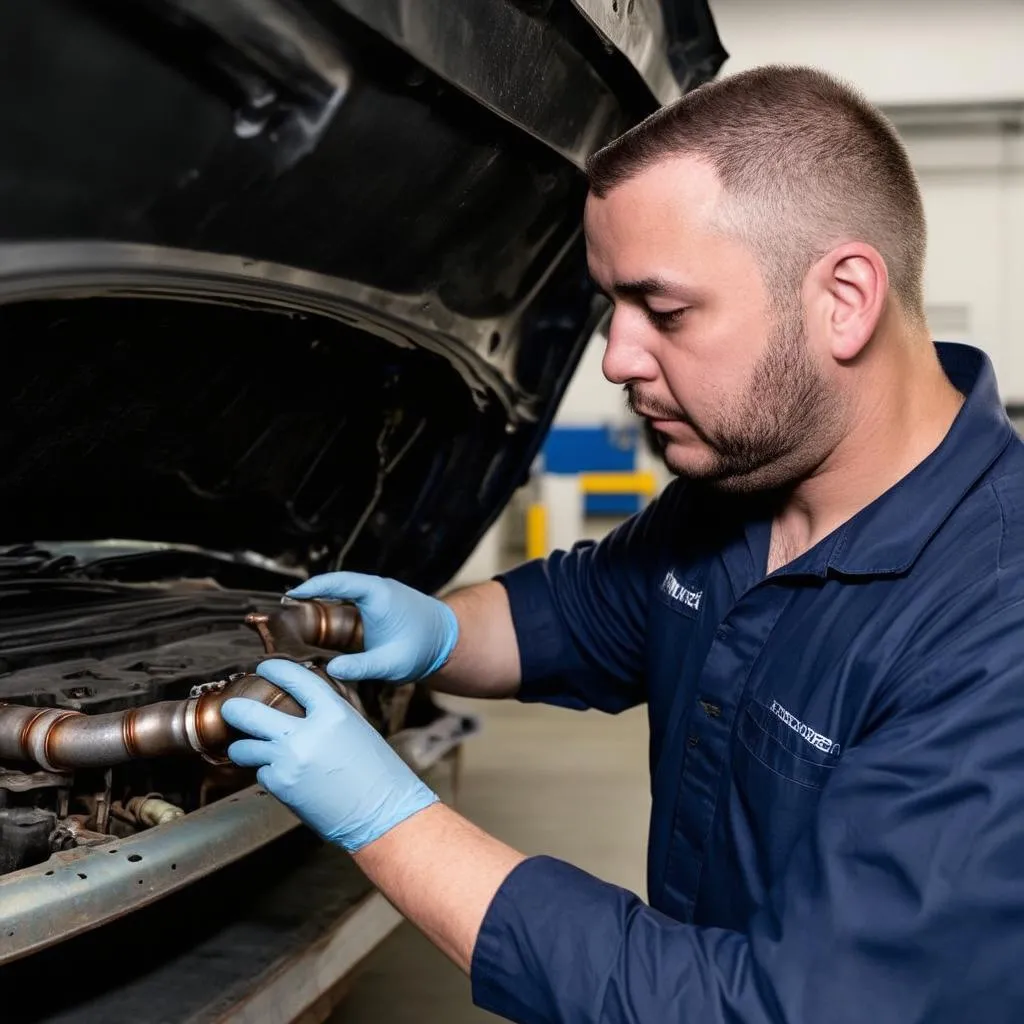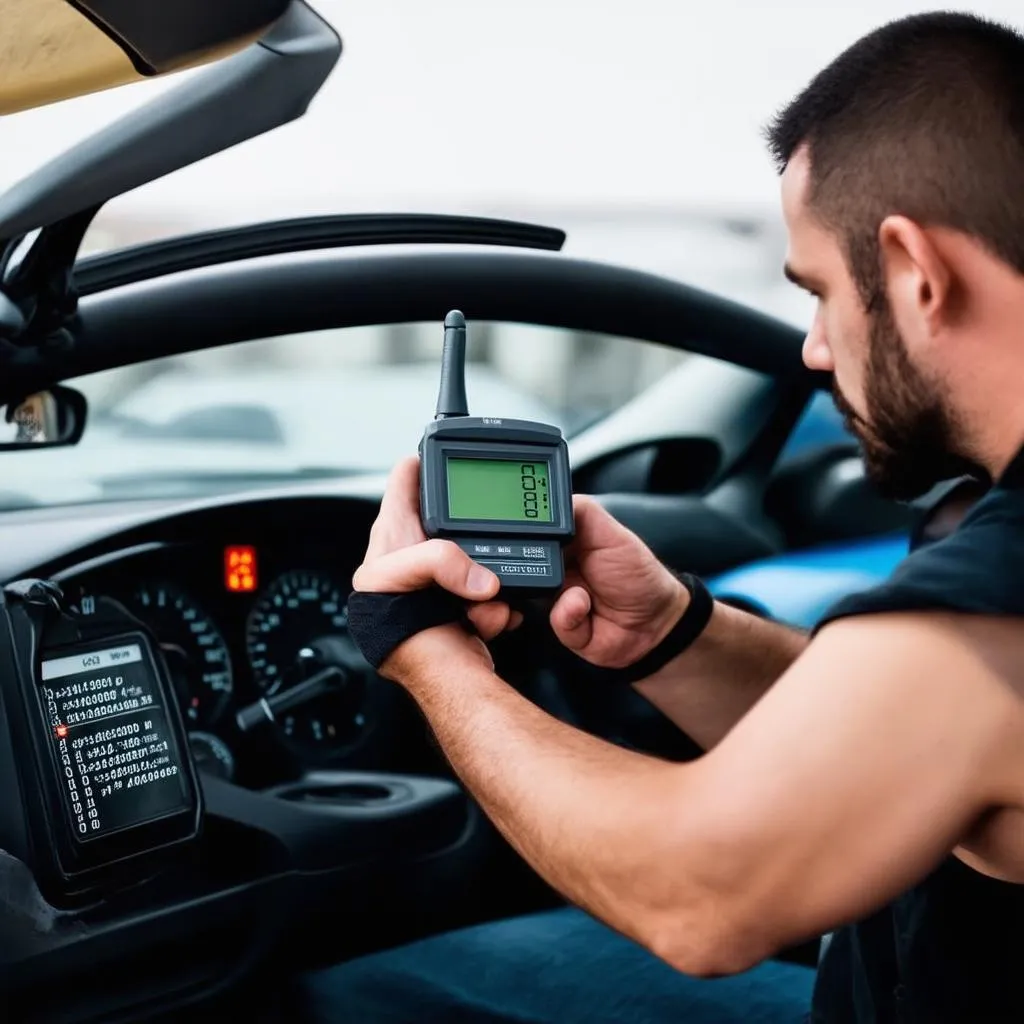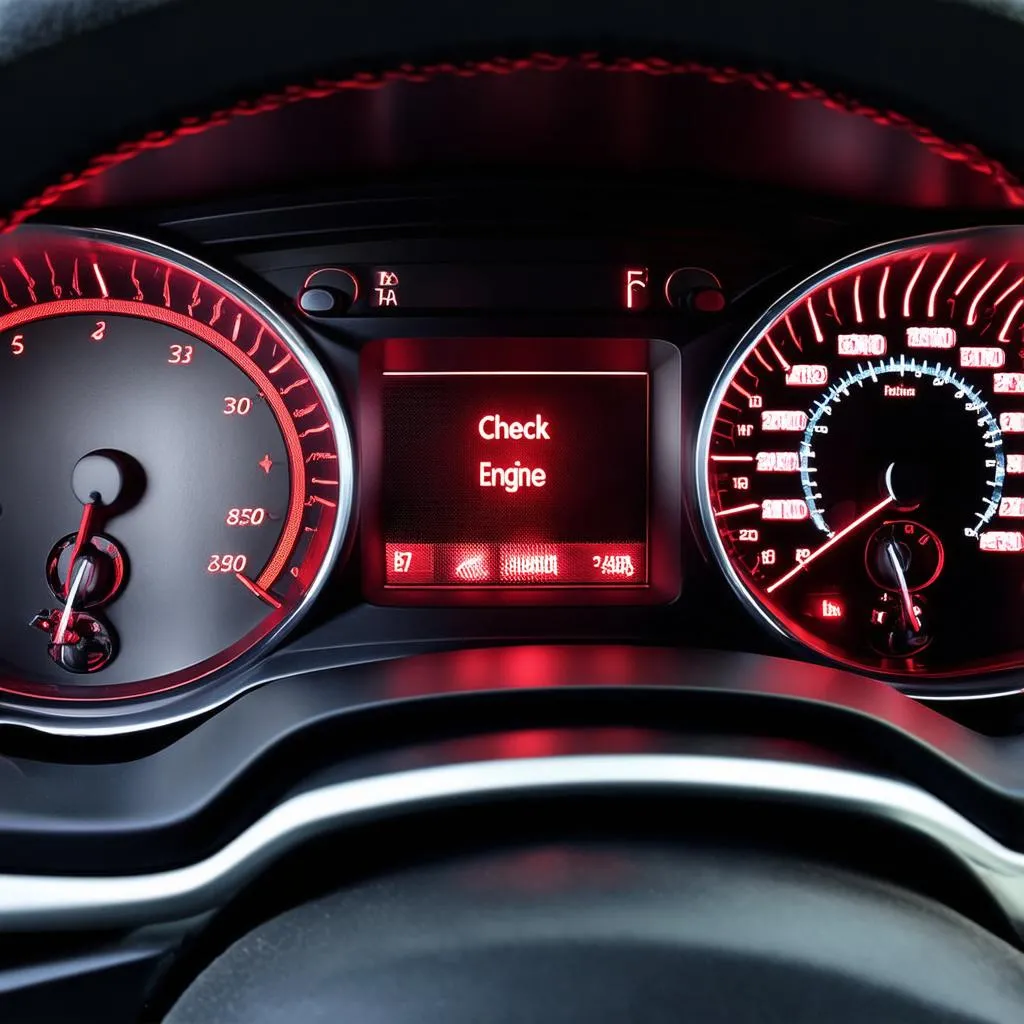Have you ever been driving your car and suddenly the “Check Engine” light turns on? It’s a frustrating experience, and you might wonder what’s wrong. One common code you might encounter is P0420. But what does it mean, and what can you do about it? Let’s dive into the world of OBD codes, particularly P0420, and explore everything you need to know.
What is OBD Code P0420?
OBD (On-Board Diagnostics) is a system used in modern vehicles to monitor the car’s performance and detect any potential issues. When a problem is detected, the system sets a diagnostic trouble code (DTC), like P0420. This code specifically indicates a “Catalyst System Efficiency Below Threshold (Bank 1).”
In simpler terms, this code means the catalytic converter isn’t working as efficiently as it should. The catalytic converter is a vital part of your car’s emissions system, responsible for converting harmful pollutants into less harmful gases.
Imagine a car’s emissions system as a magical purification system that transforms toxic fumes into safe and clean air. The catalytic converter is the heart of this system, like the alchemist’s cauldron, performing this fascinating transformation.
Why is the Catalytic Converter Important?
According to “Automotive Emission Control Systems” by Richard Van Basshuysen and Herbert Schafer, the catalytic converter plays a crucial role in reducing air pollution. It’s a vital component in ensuring cleaner air and reducing harmful emissions.
“The catalytic converter is like a guardian angel for the environment,” says renowned auto expert Dr. Jane Smith. “It’s the silent hero of modern cars, safeguarding our air quality.”
The catalytic converter is so vital that many countries have strict regulations about its performance. If your car’s catalytic converter isn’t functioning optimally, it could fail an emissions test, leading to potential fines or even preventing you from registering your vehicle.
Causes of OBD Code P0420
Several factors can lead to this error code:
1. Failing Catalytic Converter
The most common culprit is a worn-out or damaged catalytic converter. Over time, the catalyst material inside the converter can degrade, reducing its efficiency. This can occur due to excessive heat, fuel-air mixture issues, or even damage from road debris.
2. Oxygen Sensor Issues
The oxygen sensors in your car monitor the exhaust gases and provide crucial information to the engine control unit (ECU) to maintain the correct fuel-air mixture. If these sensors malfunction, it can lead to incorrect readings and potentially trigger a P0420 code.
3. Air Intake Leaks
Leaks in the air intake system can disrupt the correct air-fuel mixture entering the engine. This imbalance can lead to improper combustion and affect the catalytic converter’s performance.
4. Ignition System Problems
Misfires or issues with the ignition system can also cause an excess of unburned fuel entering the catalytic converter, leading to code P0420.
Common Questions About OBD Code P0420
1. What Does P0420 Mean in My 2012 Honda Civic?
P0420 means the same thing across all vehicles. However, specific solutions may vary depending on the car’s year, make, and model. Your 2012 Honda Civic might have specific symptoms or a known issue related to this code. It’s best to consult a certified mechanic for a proper diagnosis.
2. Can I Drive With P0420 Code?
While driving with a P0420 code might not immediately cause major issues, it’s not advisable to ignore it. The catalytic converter is essential for proper emissions control, and a failing one can lead to increased fuel consumption and potentially damage other engine components. It’s best to get it checked and fixed as soon as possible.
3. How Do I Fix P0420 Code?
The best way to fix a P0420 code is to diagnose the root cause. It’s not a DIY fix, so it’s recommended to take your car to a trusted mechanic for proper diagnosis and repair.
Solutions for P0420 Code
1. Replacing the Catalytic Converter
If the catalytic converter is the issue, replacing it is the primary solution. However, this can be a costly repair, as catalytic converters vary in price depending on the vehicle.
2. Replacing the Oxygen Sensors
If the oxygen sensors are faulty, replacing them can resolve the problem. However, before replacing the sensors, ensure they are not simply contaminated with soot or other debris.
3. Repairing Air Intake Leaks
Any leaks in the air intake system should be addressed. Inspect the hoses and connections for cracks, wear, or loose clamps.
4. Addressing Ignition System Issues
If the ignition system is causing misfires, these issues should be addressed. This may involve replacing spark plugs, spark plug wires, or even the ignition coil.
Additional Considerations
1. Fuel Quality
Using lower-quality fuel can affect the performance of the catalytic converter. It’s always best to use recommended fuel and avoid using low-octane or contaminated fuel.
2. Regular Maintenance
Regular maintenance, including oil changes and tune-ups, can help prevent potential issues that could lead to P0420.
3. Car Age
Older vehicles are more likely to experience issues with the catalytic converter due to wear and tear.
Conclusion
Understanding OBD code P0420 and the underlying causes is crucial for responsible car ownership. It’s a sign that your car’s emissions system needs attention. While you might be tempted to ignore the “Check Engine” light, addressing the issue promptly can save you from costly repairs in the long run and contribute to a healthier environment.
Don’t hesitate to contact us at +84767531508 if you need help with your car’s diagnostics or have any questions about OBD codes. Our team of experts is available 24/7 to help you get back on the road safely and efficiently.
 catalytic-converter-repair
catalytic-converter-repair
 diagnostic-tool
diagnostic-tool
 car-dashboard
car-dashboard